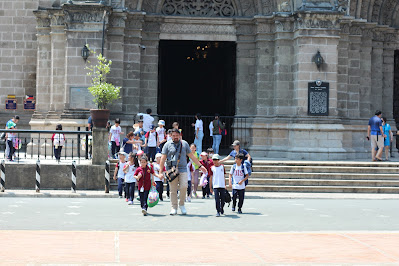The San Agustin Church, located in Intramuros, Manila, is one of the most significant and historic landmarks in the Philippines. Here are some key points about the church:
Historical Significance
Oldest Stone Church in the Philippines: The San Agustin Church is the oldest stone church in the country, with its construction completed in 1607. It has withstood numerous natural disasters and historical events, including earthquakes, fires, and wars.
UNESCO World Heritage Site: In 1993, the church, along with three other Baroque churches in the Philippines, was designated as a UNESCO World Heritage Site under the collective title "Baroque Churches of the Philippines." This recognition highlights its architectural and historical importance.
Architectural Style: The church is a fine example of Baroque architecture, characterized by its intricate carvings, detailed facades, and grand interiors. The use of coral stone and its robust structure helped it survive many natural disasters.
Architectural Features
Facade and Bell Tower: The facade of the church is simple yet elegant, with a mix of Baroque and Spanish colonial influences. The bell tower, which was originally twin towers, now stands alone as one of the towers was destroyed during an earthquake.
Interior: The interior of the church is renowned for its trompe-l'œil murals on the ceilings and walls, creating an illusion of three-dimensional architectural features. The church also houses an intricately carved wooden door and a pulpit made from a single block of molave wood.
Retablo: The main altar, or retablo, is a beautiful piece of art adorned with religious icons and detailed carvings.
Historical Events
War and Occupation: During World War II, the church played a significant role as a refuge for civilians during the Battle of Manila. Despite the heavy bombing in Intramuros, the church survived with minimal damage.
Restoration and Preservation: Over the years, the San Agustin Church has undergone several restoration and preservation efforts to maintain its historical and architectural integrity. These efforts ensure that the church remains a vital part of the cultural heritage of the Philippines.
Current Use
- Religious Services: The San Agustin Church continues to serve as a place of worship, hosting regular masses, weddings, and other religious ceremonies.
- Museum: Adjacent to the church is the San Agustin Museum, which houses a collection of religious artifacts, art pieces, and historical items that provide insight into the rich history of the church and the Philippines.
The San Agustin Church stands as a testament to the rich cultural and historical tapestry of the Philippines, embodying the resilience and faith of its people through the centuries.








No comments:
Post a Comment